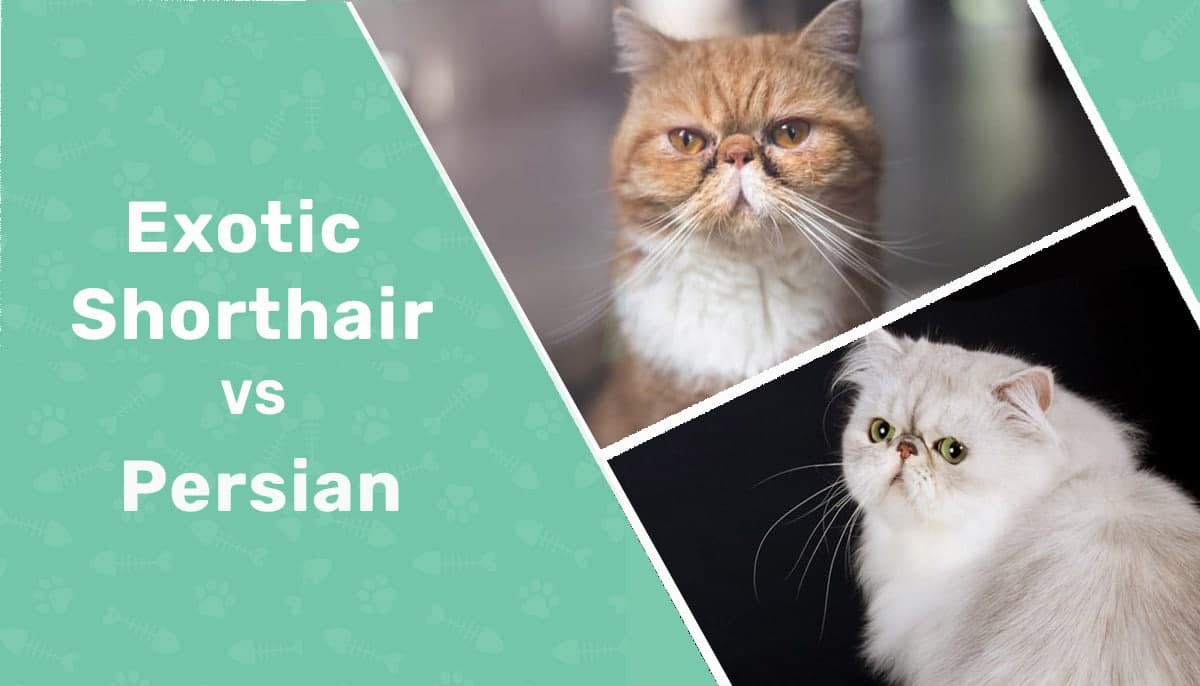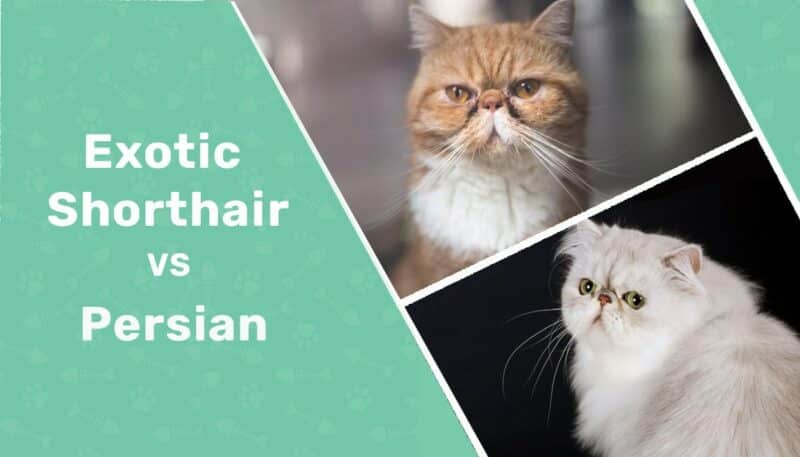Exotic Shorthairs and Persians are often confused with one another. The reason is that the breed standards for both cats are identical, except for the coat length. Exotic Shorthairs have short coats, whereas Persians have long, glamorous coats.
In addition to the different coat lengths, Exotic Shorthairs are a bit feistier and more social, whereas Persians enjoy quiet, relaxing environments. Understanding the differences between the breeds can help you determine whether an Exotic Shorthair or Persian is right for your home.
To learn more about these two similar breeds, keep reading. This article thoroughly explains the differences between the breeds so that you can determine which cat is best suited for your home and family.

Visual Differences
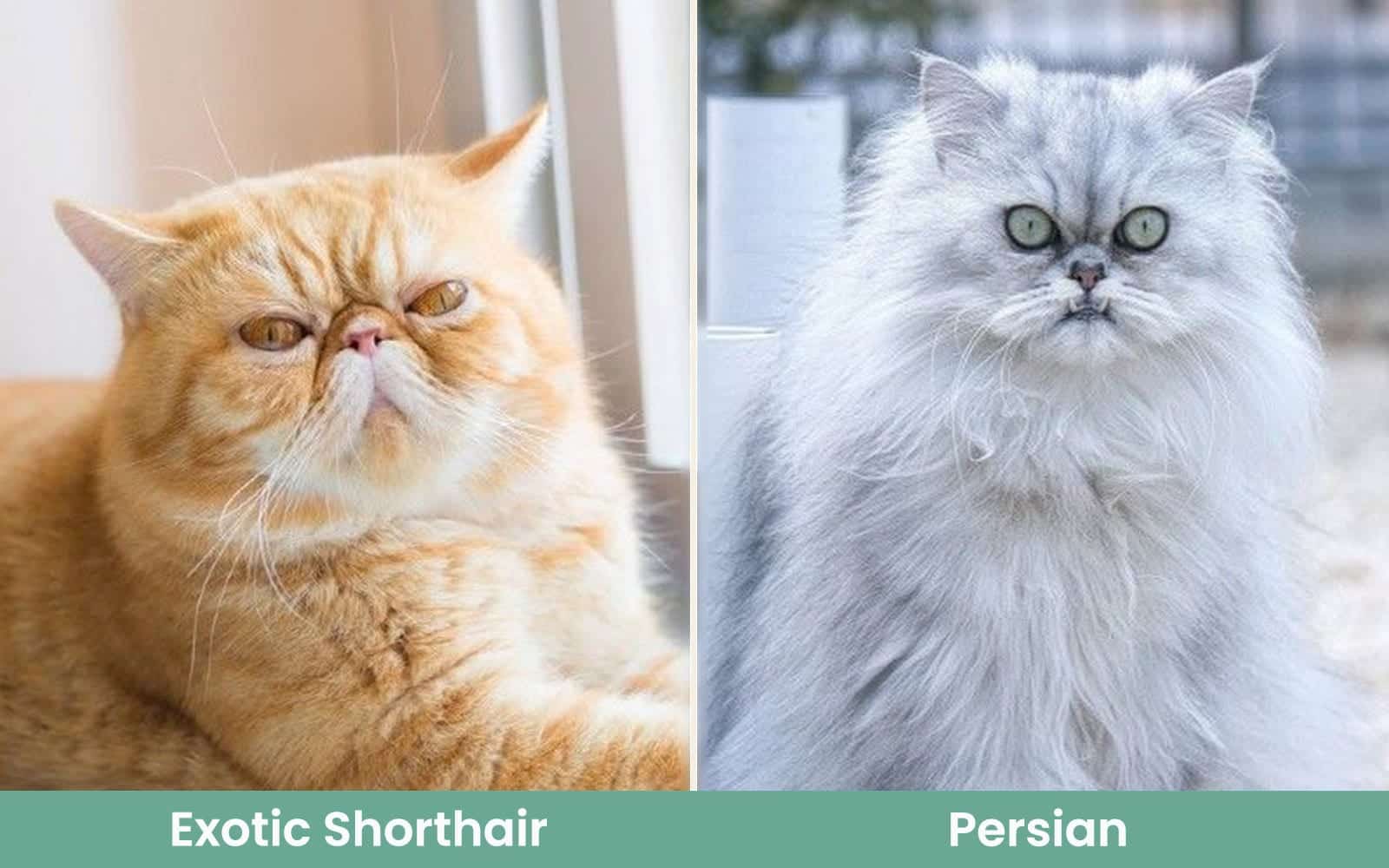
Image Credit: Left – Exotic Shorthair cat (Wutlufaipy, Shutterstock); Right – Persian Cat (Piqsels)
At a Glance
- Average height (adult): 10–12 inches
- Average weight (adult): 10–12 pounds
- Lifespan: 8–15 years
- Exercise: Less than 1 hour a day
- Grooming needs: Moderate
- Family-friendly: Yes
- Other pet-friendly: Yes
- Personality: Social, affectionate, playful
- Average height (adult): 10–15 inches
- Average weight (adult): 7–13 pounds
- Lifespan: 10–15 years
- Exercise: Less than 1 hour a day
- Grooming needs: Extensive grooming; daily
- Family-friendly: Yes, ideal for quiet households
- Other pet-friendly: Sometimes
- Personality: Affectionate, quiet, able to be alone
Exotic Shorthair Cat Overview
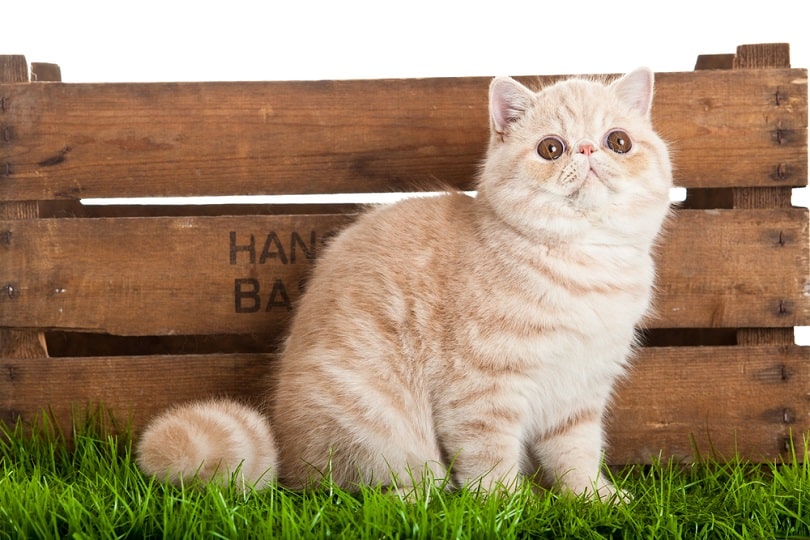
The Exotic Shorthair was developed by breeding Persians with American Shorthairs, Burmese, and Russian Blues. The result is an adorable cat that looks like a Persian but has a more laid-back nature and fewer grooming requirements.
Exotic Shorthairs are best for families that want a loving and affectionate companion cat. The cat will fit in best in homes where someone is always home. They also make good cats for individuals who do not want to groom their pets daily.
Personality
Exotic Shorthairs are known for being easygoing and peaceful companions. They love to follow you around and will sit in your lap whenever given a chance. Males make especially loving companions, though females are loving, too. Females are just a bit more independent than males.
Even though Exotic Shorthairs are incredibly loving and affectionate to their owners, they are known to be a bit cautious at first. Luckily, they warm up to visitors. If the visitor tries to play with the cat, you can expect your Exotic Shorthair to warm up quickly.
Grooming
Persians and Exotic Shorthairs look nearly identical. In fact, the cats have all the same standards. The only difference is the coat length. Exotic Shorthairs have short hair, whereas Persians have long hair that requires daily grooming.
Since Exotic Shorthairs have much shorter hair than Persians, they are sometimes called the “Lazy Man’s Persians.” To keep it beautiful and untangled, you only need to comb out the fur once or twice a week. While your cat is shedding, groom a few more times than usual to keep your home clean.
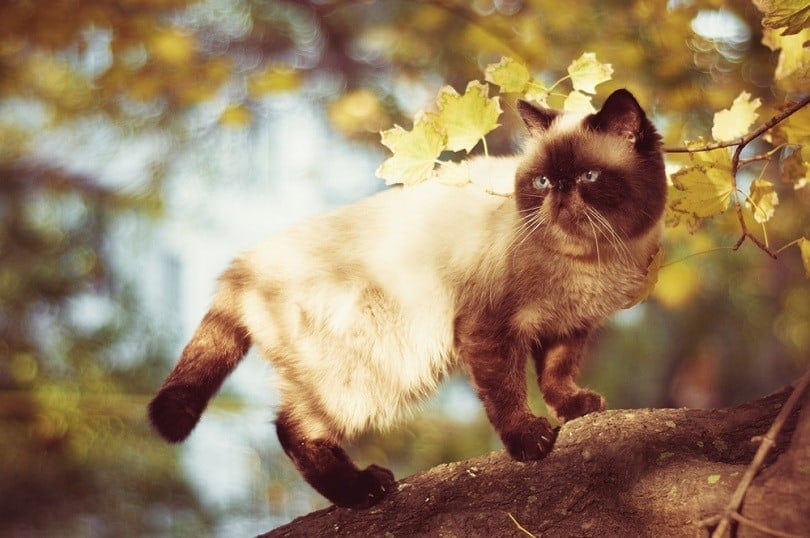
Health
Exotic Shorthairs can have several hereditary health issues if bred by irresponsible breeders. The most common illness is polycystic kidney disease. Talking to your vet and selecting a reputable breeder will help to decrease the chances of your cat developing health conditions. If cared for properly, you can expect your Exotic Shorthair to live about 15 years.
Suitable for:
Exotic Shorthairs are suitable for many cat owners and families. Because the cat is so easygoing and affectionate, it is a great cat if you want a companion. Its short hair also makes it an option for individuals who don’t want to groom their cats daily.
Persian Cat Overview
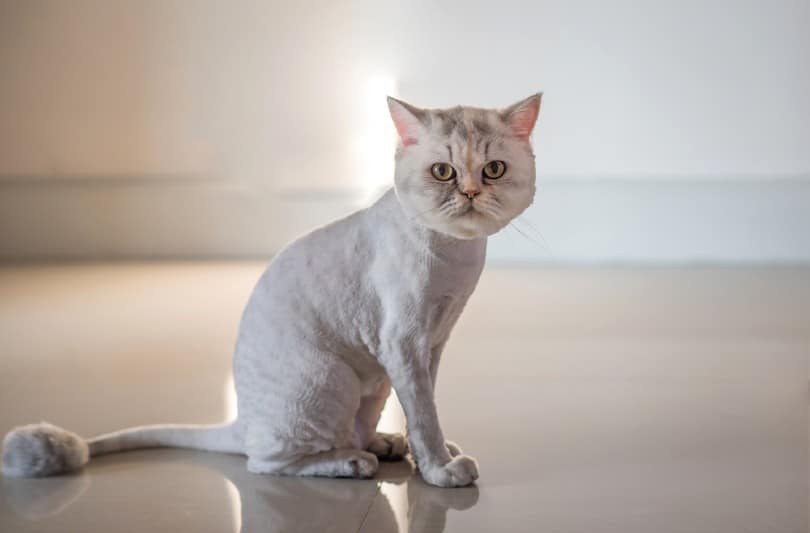
Persians are one of the most glamorous cats around. They have an adorable face and flowing coat. Unfortunately, the breed has intense grooming requirements and some health issues, only making it an option for individuals willing to put in a lot of effort for their cat.
Overall, Persians are best for quiet households and families who know how to treat a cat with respect. They can tolerate being alone well, but ensure you have the time to groom their coat once a day.
Personality
Persians are known to be quiet, gentle, and peaceful. They enjoy lying around in quiet and serene environments. The cat will quickly become attached to people who treat it kindly and are not too loud or rambunctious around it.
Because of how quiet Persians are, they are best for households with no children. However, they can be paired with children as long as your children know how to respect the cat. Persians also make good companions for individuals who aren’t home all day since they do not get lonely easily.
Grooming
Persians are high maintenance. Their long coat requires you to use a stainless-steel comb daily. The comb will help remove any mats, tangles, and loose hair. Daily grooming will keep your cat beautiful and healthy but also minimize shedding around your home.
Unlike many other cats, Persians need to be bathed once a week. To prevent tear stains, you must also wipe the Persian’s face daily, especially around the eyes. The cat may fight you during bath time at first, but they will quickly become accustomed to the routine.
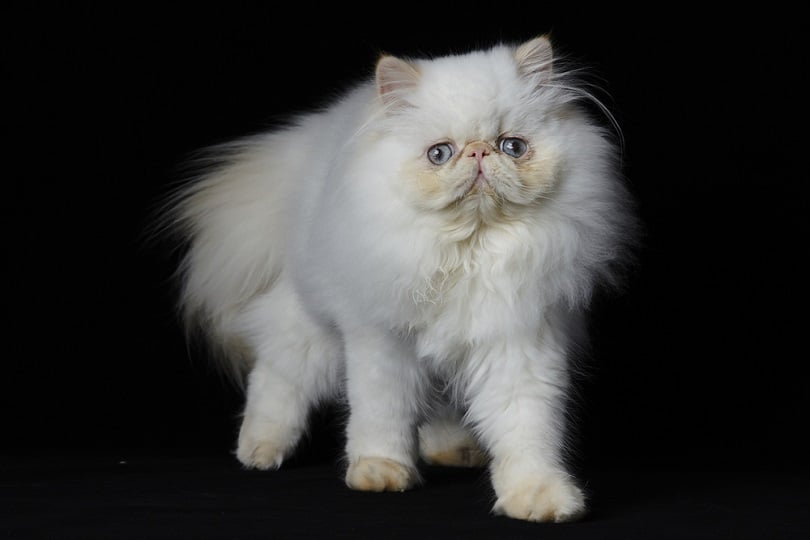
Health
Just like any other purebred cat, Persians have hereditary diseases. The diseases can include polycystic kidney disease, progressive retinal atrophy, bladder stones, and many other problems. However, you can select a responsible breeder to avoid hereditary diseases. Also, work closely with your vet to provide your Persian the care they deserve.
Suitable for:
Persians are best suited for adult households that are quiet and serene. Whether you are at home frequently or are gone the entire day, the Persian will fit in fine if the environment is peaceful, relaxing, and cozy. If you have children, a Persian is still an option, but talk to your children about how to behave around the cat.
How to Choose Between an Exotic Shorthair and Persian
Because Exotic Shorthairs and Persians are similar in so many ways, it may feel challenging to make your final selection between the two. However, there are two factors you need to consider when deciding whether an Exotic Shorthair or Persian is right for you: your home environment and grooming requirements.
Your Home Environment
Because Exotic Shorthairs and Persians have different personalities, you need to consider your environment.
If you have a loud household with people coming and going, an Exotic Shorthair will be the better option. The noise won’t overwhelm them, and they will love all the attention. In contrast, a loud environment will be overwhelming to a Persian.
Instead, Persians are better suited for quiet households. The Persian will love the serene environment if you live alone or only have older children and adults in the house. Exotic Shorthairs can enjoy serene environments, too, but they can’t be left alone as often as the Persians.
Ideal Grooming Requirements
Exotic Shorthairs and Persians have very different grooming requirements. If you do not want to groom your cat daily, select the Exotic Shorthair. Since Persians require grooming every single day, they are better for individuals who can dedicate more time to the cat’s care.
Which Breed Is Right for You?
Both Exotic Shorthair cats and Persian cats are lovely breeds. They have adorable faces and loving personalities known for their loyalty and affection to their owners. Despite all their similarities, Persians and Exotic Shorthairs are not identical.
An Exotic Shorthair is better for you if you have a busy home and don’t want to groom your cat daily. The cat will not be overwhelmed and will love the attention they get. Most Persians will be overwhelmed by this kind of environment.
You might want a Persian instead if you have a quiet home, are not home during the day, and don’t mind grooming the cat at night. The Persian will appreciate the quiet environment and won’t get lonely while you are at work.
Featured Image: Left – Exotic Shorthair cat (Mos Kosalakorn, Shutterstock); Right – Persian Cat (Linn Currie, Shutterstock)

